After our recent extensive investigation into ray tracing game performance, where we analyzed its visual and performance impact across 36 modern games, we can continue exploring the real-world experience on existing products.
Today, we’ll be revisiting ray tracing on the most affordable GPU from the initial Nvidia RTX launch – the card Nvidia promised would bring ray tracing to mid-range gamers: the GeForce RTX 2060. How well has this card stood the test of time, and did Nvidia actually deliver something useful with this GPU’s ray tracing capabilities? Well… it’s time to find out.
This is all part of our goal to better understand ray tracing as we approach a brand new generation of graphics cards, expected to launch in early 2025. What are the best games to test? How many games provide a worthwhile ray tracing experience? How important is this feature as part of a GPU package?
And crucially, for this revisit of the RTX 2060: what have gamers been sold up to this point? What baseline can we use to benchmark improvements, especially in the mainstream market?
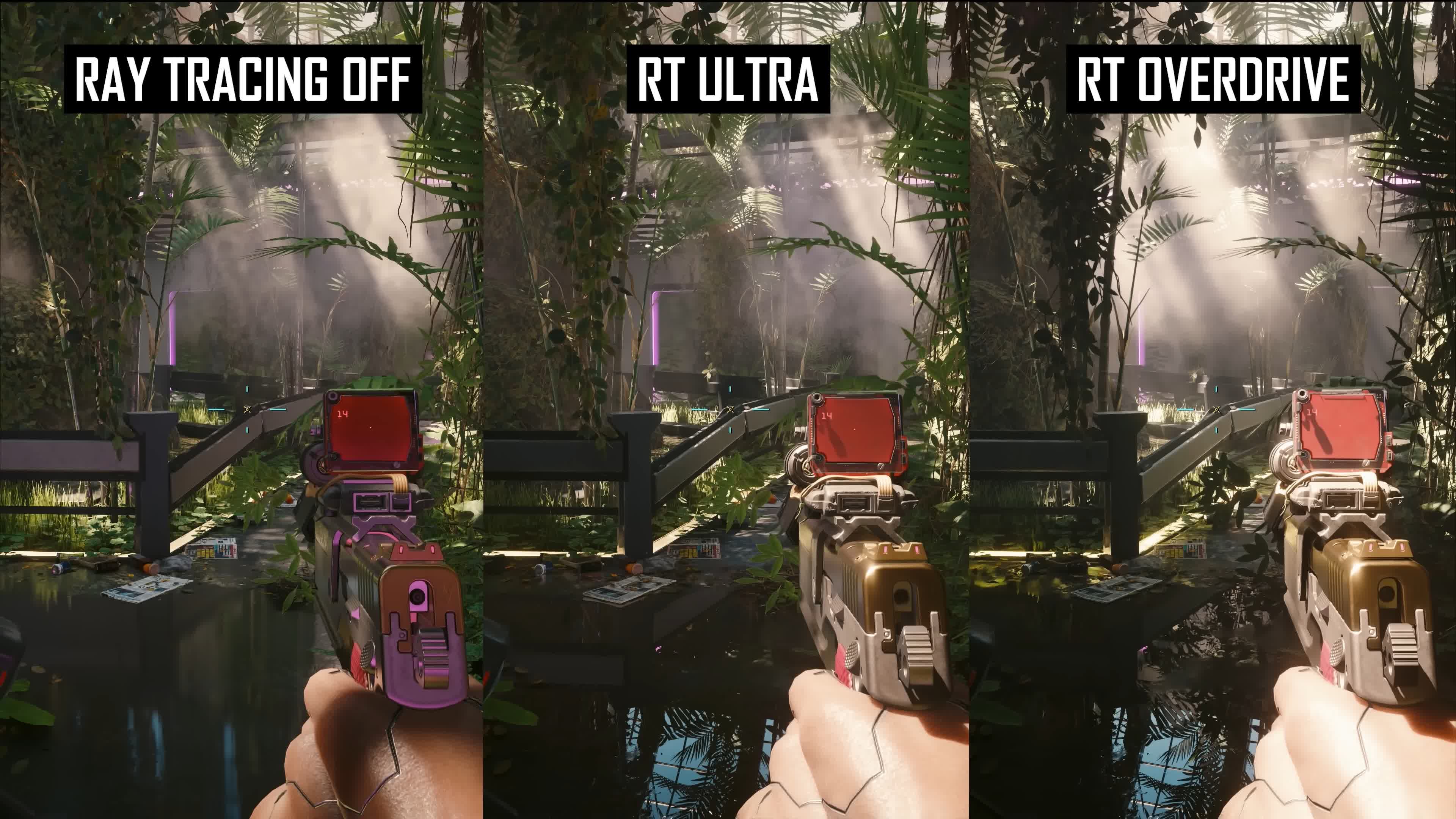
Looking at the RTX 2060 is quite a contrast to our previous RT exploration of Nvidia and AMD’s high-end GPUs and the best experiences available today. When the RTX 2060 launched in early 2019, it was a mid-range GPU priced at $350, the lowest model in the new RTX product stack to support ray tracing.
A direct replacement for the GTX 1070 in terms of price, the key feature Nvidia pushed with the 2060 was ray tracing: get this card instead of a GeForce 10 series GPU because it supports RTX features, including ray tracing and DLSS.
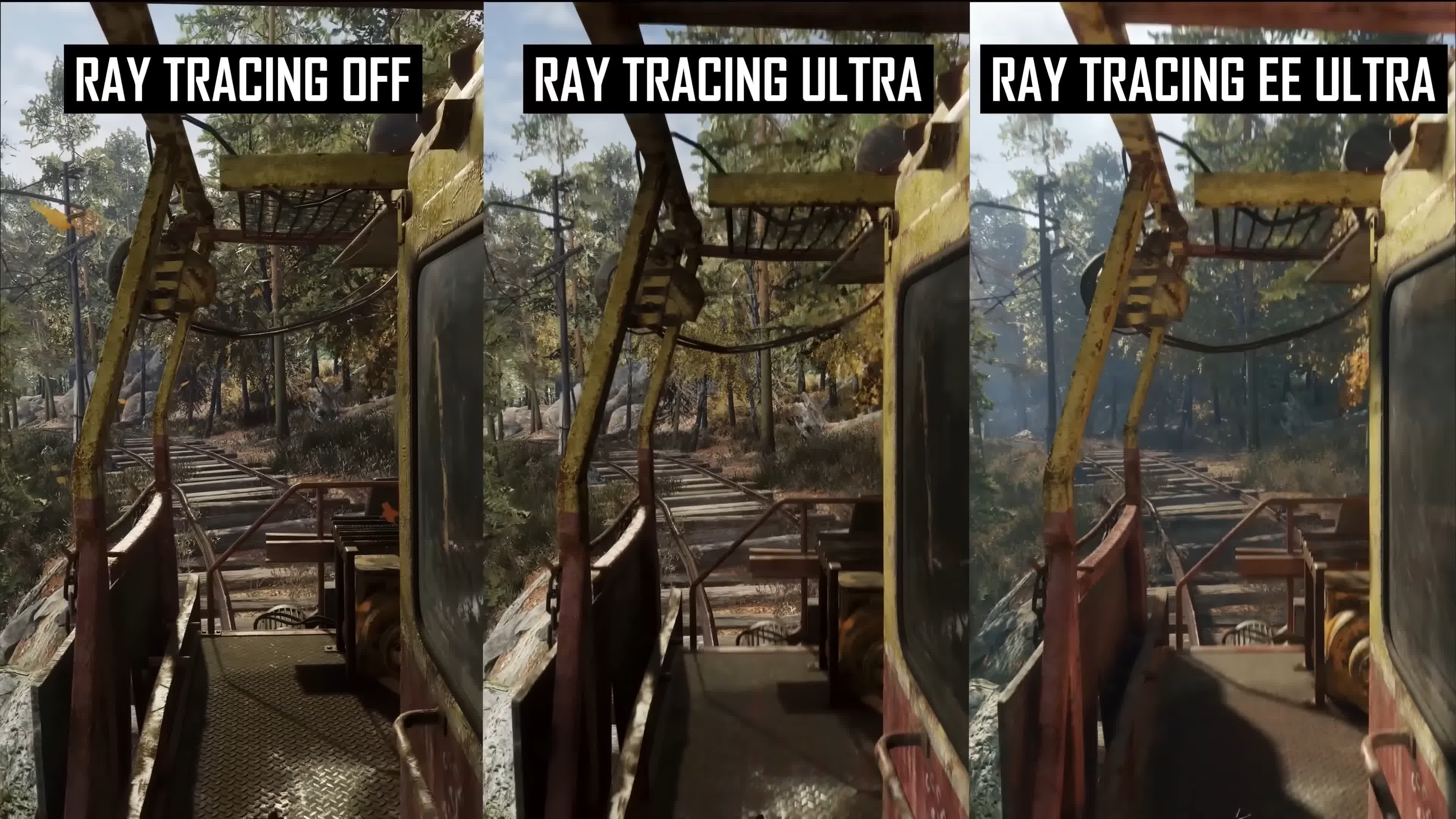
The first version of DLSS was a colossal flop back then, but over the years it has developed into a worthwhile feature. Gamers who bought a 2060 for DLSS have seen that experience improve significantly. Can the same be said for ray tracing, more than five years after the card debuted?
The RTX 2060 in Proper Context

It’s important to first set the stage for what the RTX 2060 represented at launch. As a mid-range graphics card, it was positioned for 1440p 60 FPS gaming at ultra settings, and that’s certainly what we observed in our initial review.


We tested a variety of games at 1440p and found the 2060 was a decently capable 1440p GPU, with most games playable at 60 FPS.
Steve called it the best value mid-range GPU at the time but also expressed disappointment with the bang for buck it offered. It didn’t provide significantly better cost per frame than the GTX 1070, despite being part of an entirely new generation, and it didn’t advance the mid-range all that much.

Given that the card was just 10 – 15% faster than the GTX 1070 at launch, our opinion at the time was that Nvidia were attempting two things: one, to sell gamers on RTX features like ray tracing and DLSS instead of raw performance improvements, and two, to increase GPU prices overall and elevate the mid-range in response to gamers buying more expensive graphics cards.

The 2060 wasn’t as egregious as models like the RTX 2070 and RTX 2080, but Nvidia was clearly focused on selling gamers future promises rather than current capabilities.
And now the future is here, so it’s time to assess how the RTX 2060 has aged and whether those promises have been fulfilled. When we initially planned this revisit, our goal was to examine the 2060 at the resolution it was designed for at launch: 1440p. However, after some testing, it’s evident that the RTX 2060 hasn’t aged well for 1440p gaming, even without ray tracing enabled.
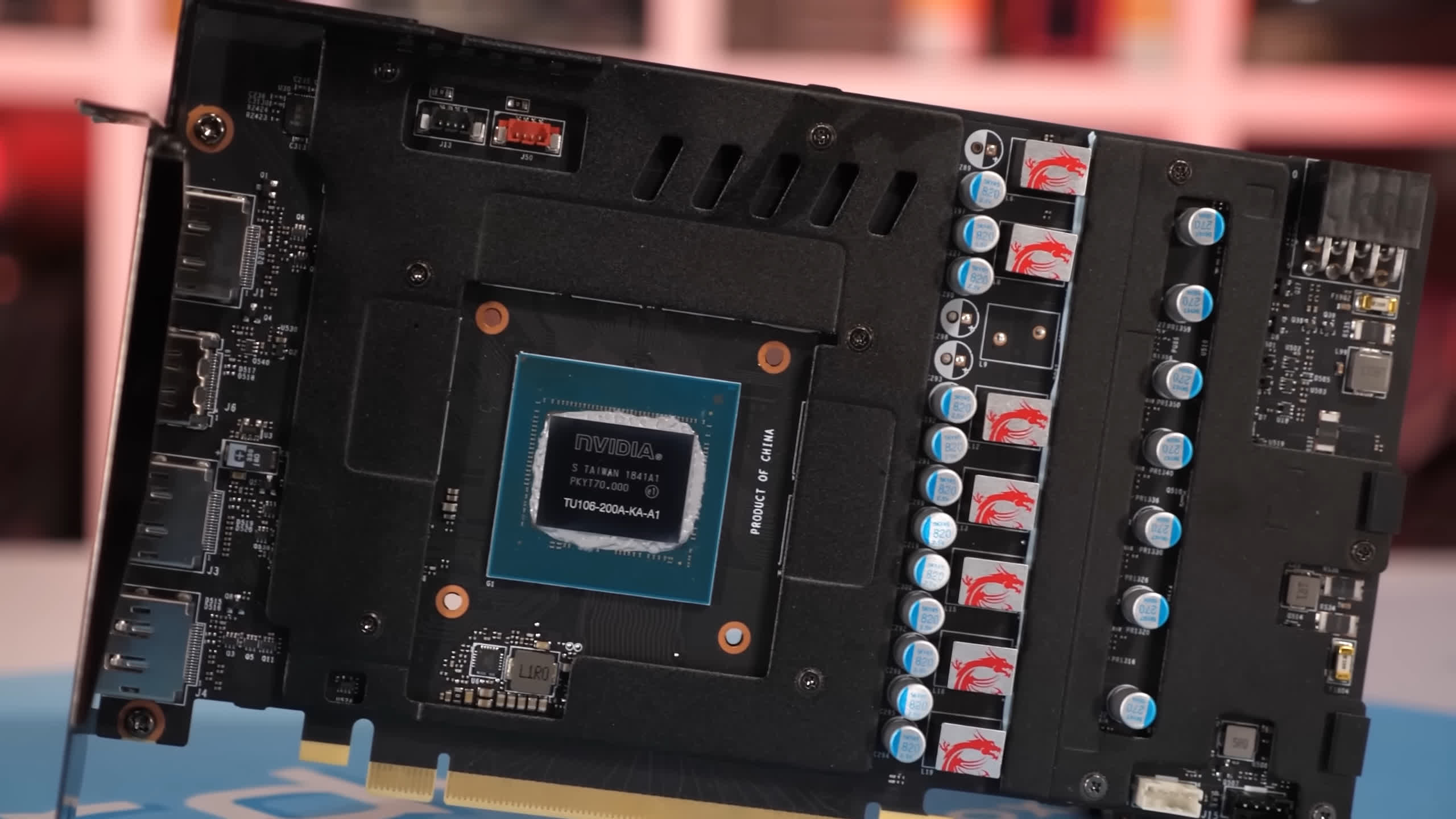
With just 6GB of VRAM, many modern titles encounter VRAM-related issues at 1440p. As is to be expected, about six years after its debut, the RTX 2060 is no longer delivering mid-range performance. These days, the 2060 is more akin to an entry-level 1080p GPU. It’s generally a bit slower than the Radeon RX 6600, and it seems likely that gamers who bought a 2060 for 1440p gaming have since upgraded to newer cards like the RTX 4060.
This revisit is now focused on 1080p and whether the RTX 2060 can handle decent-quality ray tracing effects at all – and you’ll see why this approach makes sense in the performance charts. We’re focusing on games where ray tracing is worth using, along with a couple of new additions, including titles that rely entirely on ray tracing, like Star Wars Outlaws. Let’s get into it.
Gaming Benchmarks
Ratchet & Clank: Rift Apart
We’ll start with Ratchet & Clank: Rift Apart at 1080p max settings with DLSS Quality enabled. This game is a real struggle for the RTX 2060, even without ray tracing enabled, managing just 43 FPS on average, with 1% lows dropping below 30 FPS.

Turning on ray tracing is simply not an option, as it lowers the frame rate to below 30 FPS on average, even at lower quality settings.
Something we often hear when discussing ray tracing is the idea that mid-range gamers could theoretically use ray tracing with lower overall quality presets. Instead of running ultra presets with ray tracing, the suggestion is to use medium or low presets combined with ray tracing.
We’re not advocating this as a sensible configuration, since the overall visual quality of low settings with ray tracing is usually worse than running ultra settings without ray tracing. However, when ray tracing configurations struggle to hit 30 FPS at 1080p, even with upscaling enabled, we feel it’s worth asking whether there’s any configuration where ray tracing is usable at all.
And so for Ratchet and Clank, along with all other games, we’ve tried to lower settings until ray tracing is potentially usable to see what we’re working with. In other words, how compromised the experience gets to use RT on an RTX 2060.
We’ve tried to lower settings until ray tracing is potentially usable to see what we’re working with. In other words, how compromised the experience gets to use RT on an RTX 2060 today.
With Ratchet & Clank, it’s clear that ray tracing is simply not viable on the RTX 2060. Even using Very Low settings with upscaling, enabling ray tracing results in a 40% performance hit, dropping a modest 80 FPS output (not impressive for very low settings) down to just 48 FPS on average. For those aiming for the highest quality effects that minimize visual artifacts, the experience is further reduced to 44 FPS.
Guardians of the Galaxy
In contrast, Guardians of the Galaxy is playable with ray tracing enabled on the RTX 2060. Rasterized performance using max settings and DLSS upscaling exceeds 100 FPS in the area we tested.
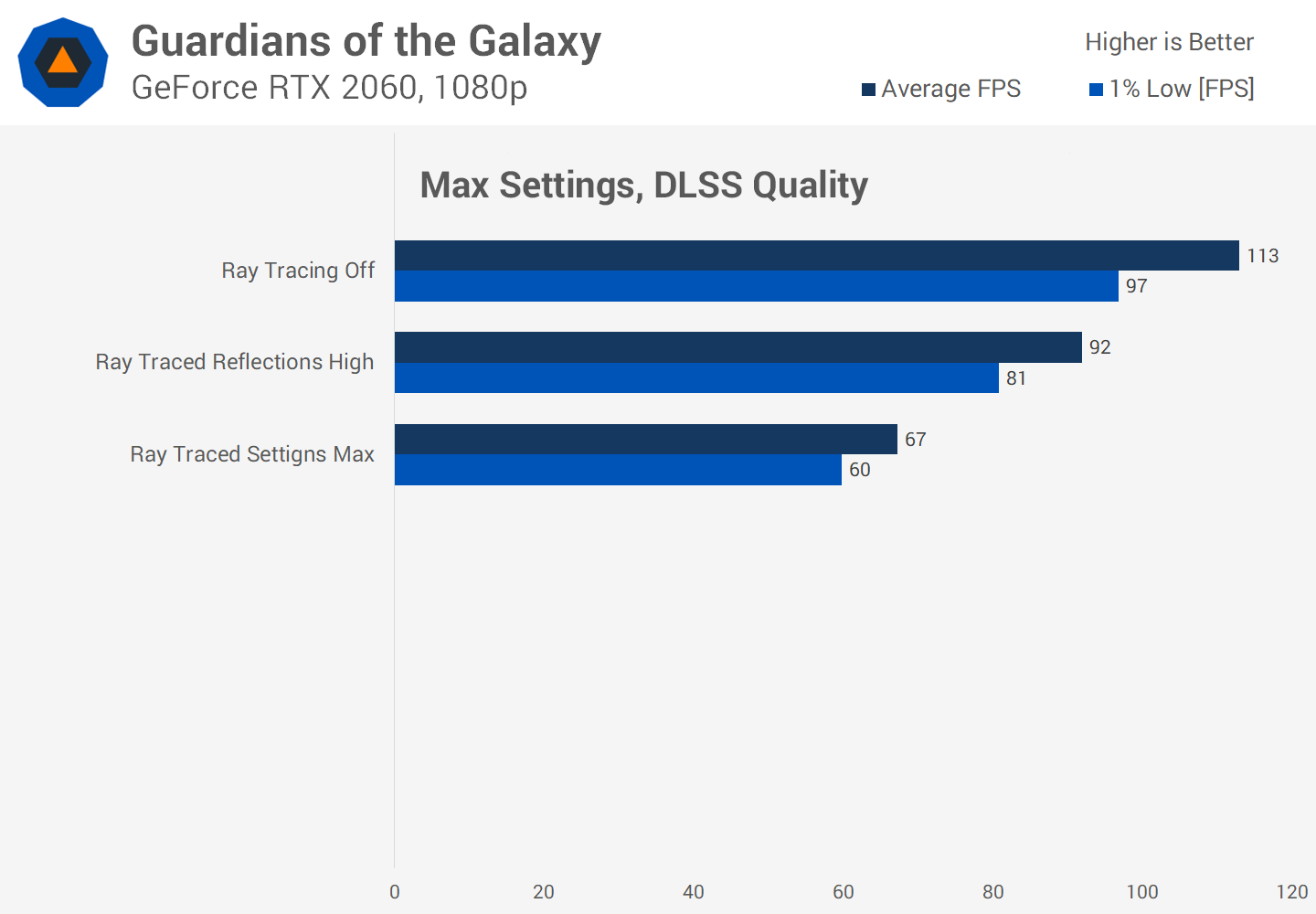
Enabling RT reflections reduces performance but still maintains a frame rate above 60 FPS. Granted, this is at 1080p, but it’s a win for the RTX 2060 since we don’t have to lower quality settings to find a configuration where ray tracing is usable.
Doom Eternal
Doom Eternal performs exceptionally well on the RTX 2060 without ray tracing enabled, achieving 150 FPS on average using Ultra Nightmare settings at native 1080p. However, enabling ray tracing cripples the card to just 42 FPS on average, which is unplayable for a fast-paced shooter like this.

The good news is that you don’t have to compromise settings too much to make ray tracing semi-usable: dropping to the “Ultra” preset and enabling DLSS delivers 72 FPS on average with RT enabled. While this isn’t how we’d prefer to play – getting 174 FPS without ray tracing is much more appealing – the card can technically run RT in this game if that’s your preference.
Suicide Squad
The RTX 2060 struggles with ray tracing in Suicide Squad. At 1080p High settings with DLSS Quality, the game experiences stuttering issues, especially with RT enabled, which cripples performance – likely due to insufficient VRAM.
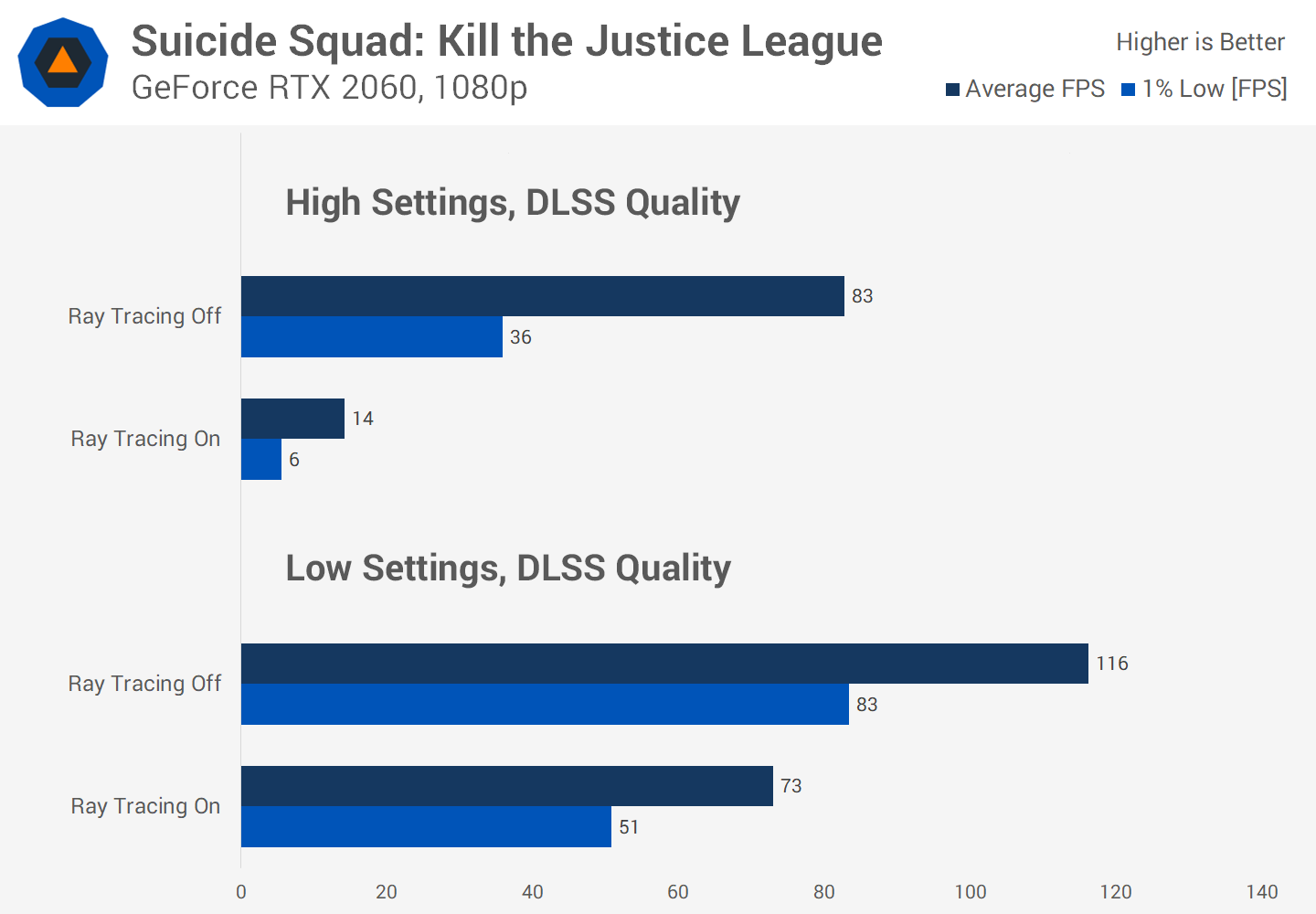
The game is technically playable with ray tracing if you’re willing to drop the preset to Low, but even then, the result is just 73 FPS on average, which isn’t impressive considering the visual quality reductions beyond reflections.
Dragon Age: The Veilguard
Dragon Age: The Veilguard is a new addition to our ray tracing tests, enhancing visuals in some areas primarily through ray-traced reflections. Unfortunately, the RTX 2060 isn’t powerful enough to run this game on Ultra settings, even at 1080p with DLSS Quality.

The high VRAM requirements overwhelm the GPU’s 6GB buffer. To achieve semi-usable ray tracing, you must drop the preset to Low and stick to “Selective” ray tracing, which applies effects in a very limited manner.
Ghostwire Tokyo
Ray tracing in Ghostwire Tokyo using max settings is a no-go. The game suffers from significant stuttering and performance issues within minutes of gameplay when ray tracing is enabled – once again, likely a VRAM bottleneck.

Lowering the preset to Low and enabling ray tracing gets the average frame rate to 60 FPS, but the experience remains unpleasant due to frequent stuttering. Theoretically, you could combine Low settings with Low ray tracing, but the quality of the reflections at this setting doesn’t justify the effort.
Watch Dogs Legion
Watch Dogs Legion is one of the older titles in our tests, and the RTX 2060 can deliver playable frame rates at 1080p max settings with DLSS, though it falls short of 60 FPS. Enabling ray tracing under these settings is out of the question unless you’re comfortable with 30 FPS gameplay.

To hit 60 FPS with ray tracing enabled, you have to drop most other quality settings to Low, leading to substantial visual compromises just to enable RT.
The Witcher 3
The Witcher 3 is another game where the RTX 2060 struggles to deliver a playable experience with ray tracing, even at 1080p. Ultra+ settings are completely out of reach, as the GPU struggles to maintain 60 FPS even without RT.

What’s surprising is how taxing ray tracing remains even on the Low preset. While you can achieve over 100 FPS with these settings, enabling RT global illumination – at the lowest possible setting – halves performance, dropping the RTX 2060 below 60 FPS on average. Maxing out RT results in a 30 FPS experience, making it difficult to justify ray tracing in this title on the 2060.
Control
Control launched with ray tracing just a few months after the RTX 2060 and isn’t really playable at max settings due to texture loading issues, despite reasonable frame rates. To address this, we enabled DLSS Quality and dropped the preset to Medium.

After these adjustments, the RTX 2060 can handle ray tracing at reasonable frame rates. While it’s a compromised experience in terms of visual quality, we’ll take it as a win.
Dying Light 2
The RTX 2060 is more than powerful enough to run Dying Light 2 using ultra settings without ray tracing enabled, hitting 91 FPS on average with DLSS Quality enabled. However, if you want to use ray tracing in this title – at least on settings that noticeably improve visual quality – it’s difficult to achieve a consistent 60 FPS.

The game is playable at around 50 FPS using max settings, but lowering the visual preset couldn’t quite push the average up to 60 FPS, leaving the question of whether frame rates in the 50s are good enough.
Spider-Man: Miles Morales
Spider-Man: Miles Morales is borderline playable with ray tracing enabled, achieving 50 FPS on average using max settings, although the 1% lows aren’t great. Similar to Dying Light 2, lowering the overall preset all the way down to Low still can’t push ray tracing up to 60 FPS on average, which is disappointing.

Spider-Man
That said, as seen from the Spider-Man results, it’s possible to tweak settings slightly to get ray tracing into a usable and playable configuration. Reflections on High, for instance, can deliver 60 FPS on average, with a decent experience on lower settings. However, as we’ve found throughout this exploration, ray tracing typically requires other compromises to hit good performance targets.

Metro Exodus
Metro Exodus is an interesting case, particularly when including the Enhanced Edition. At max settings and 1080p, the RTX 2060 cannot achieve decently playable performance, typically hovering around 30 – 40 FPS.
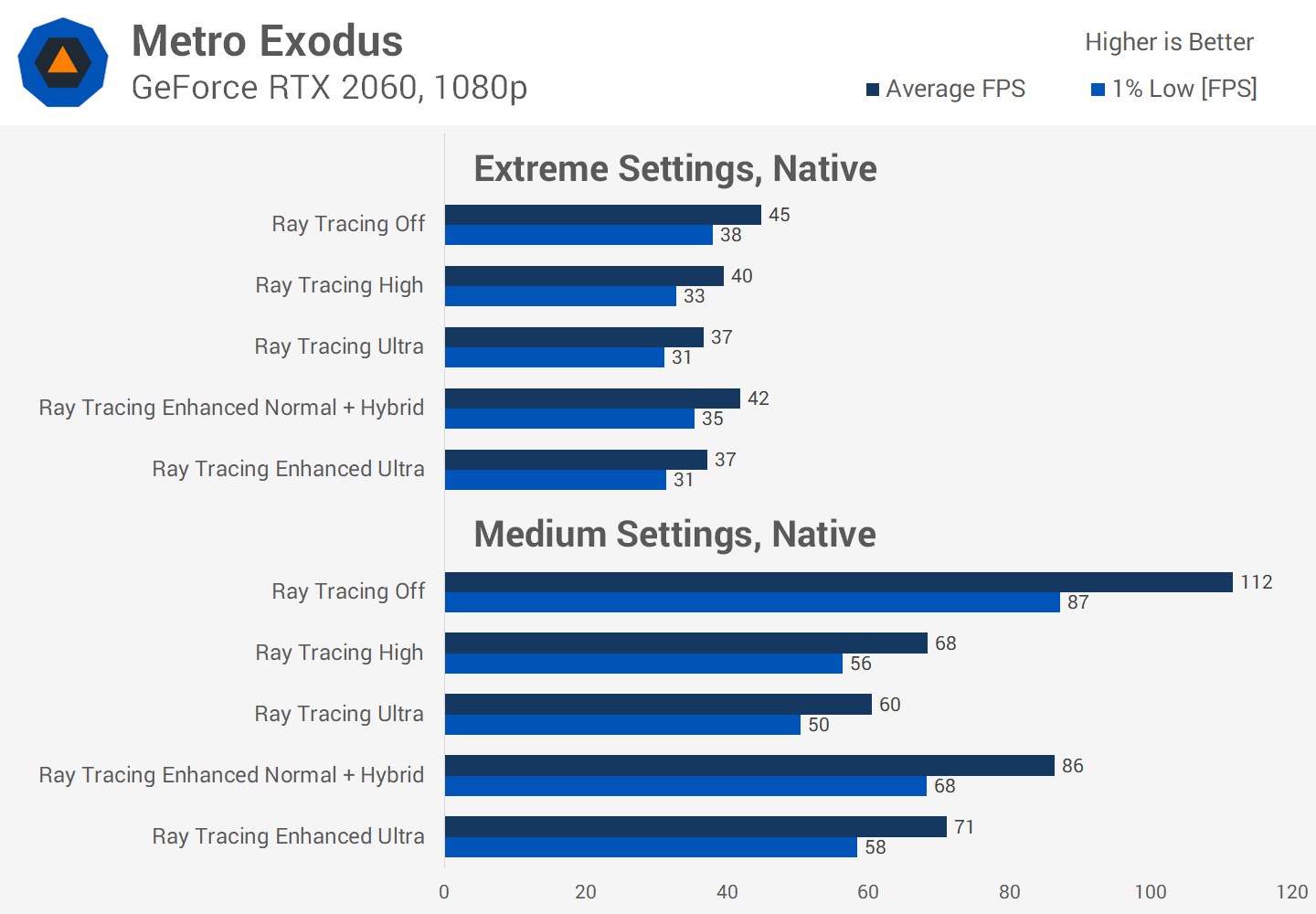
However, dropping the overall preset to Medium makes ray tracing viable, even with the visually superior Enhanced Edition. Using Medium settings and lowered RT settings, the Enhanced Edition runs at 86 FPS on average. While this is a compromised experience compared to higher-quality modes, it’s a better outcome than many other titles we’ve tested.
Black Myth: Wukong
There’s not much to say about ray tracing in Black Myth: Wukong. The RTX 2060 is far too slow to handle path tracing, making this visually impressive setting off-limits even when compromising other visual settings.

Software Lumen isn’t much of an issue on the 2060 in this game, at least below the Cinematic preset, but Software Lumen doesn’t require dedicated RT hardware. Path tracing, however, is a no-go.
Alan Wake 2
Alan Wake 2 is one of the best examples of ray tracing, but the RTX 2060 is simply not capable of using it, even at 1080p with Low settings. This GPU struggles to render Alan Wake 2 without RT enabled, failing to hit 60 FPS on average using the lowest preset. Enabling RT cripples performance, making the game completely unplayable.

Cyberpunk 2077
It’s a similar story with Cyberpunk 2077. The modes worth using, such as Ultra RT or Overdrive (path tracing), are out of reach for the RTX 2060. Using the Low preset at 1080p with DLSS Quality and Ultra ray tracing in our test area resulted in just 21 FPS on average, while Overdrive mode is entirely out of the question.

For visually stunning games like this, the RTX 2060 falls far short of the performance required to enable ray tracing.
Finally, we arrive at two titles that use ray tracing across the board, without the option to disable RT effects.
Ray Traced Only Games
In Star Wars Outlaws, playing on the 2060 at 1080p using Ultra settings is not feasible. The game fails to hit 60 FPS even on the Low preset and suffers from texture loading issues on higher presets due to the GPU’s insufficient 6GB of VRAM.
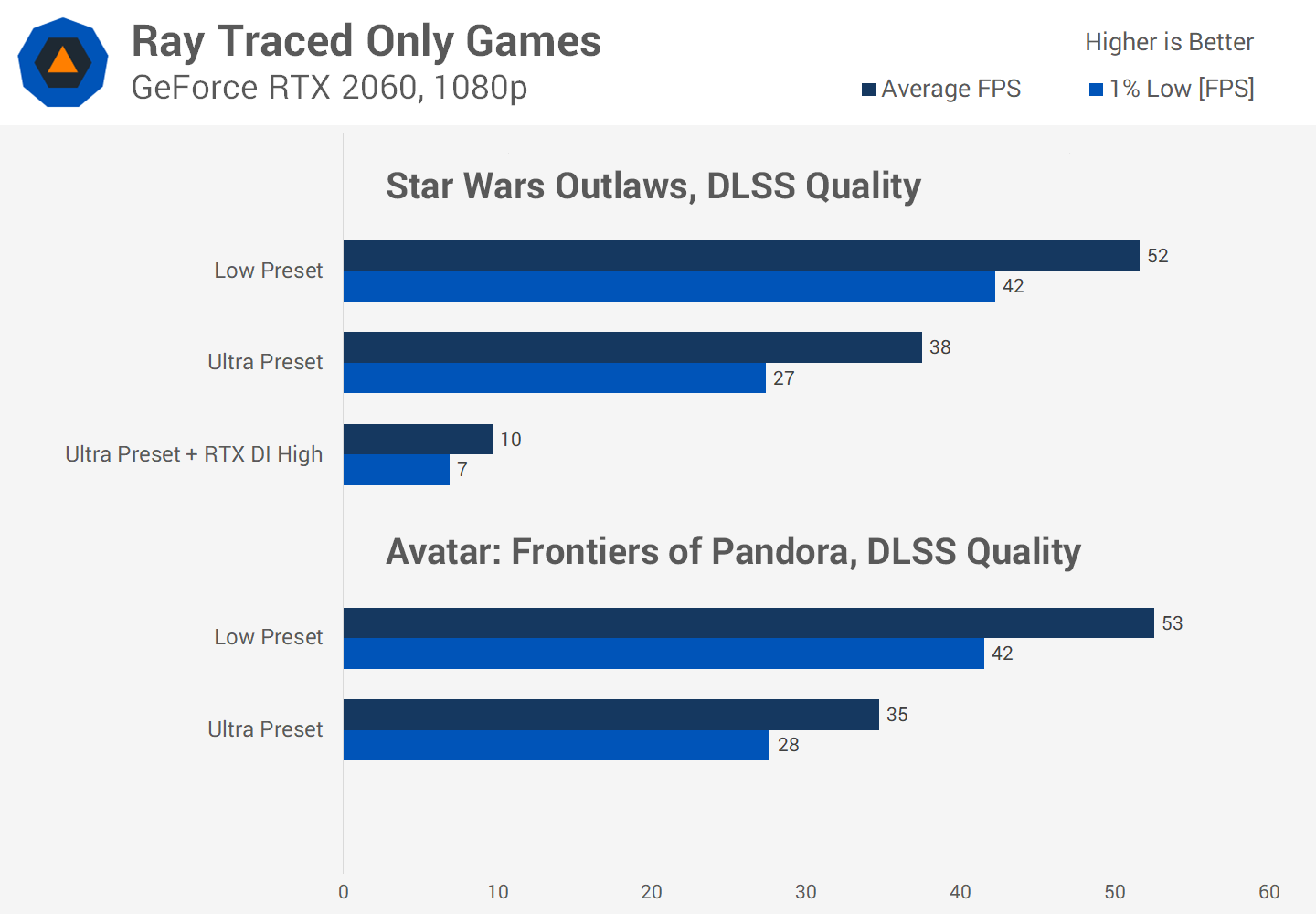
Meanwhile, in Avatar: Frontiers of Pandora, texture loading problems are even worse. Even on the Low preset, the game fails to consistently hit 60 FPS at 1080p.
In both cases, you could argue that 50 FPS on average using Low settings is playable, albeit far from ideal, and we’d probably agree. However, we were hoping for better performance in these RT-only titles, even with quality settings dialed down. If future games continue down this path and start removing non-RT configurations, GPUs with this level of RT performance won’t be able to keep up.
Performance Summary: Can It Do 60 FPS?
Let’s summarize these results into a single chart, and now we can clearly see how poorly the RTX 2060 has aged for ray tracing. This first chart shows configurations without visual compromises – aside from using DLSS Quality mode – so we’re talking ultra or maximum rasterization settings with ray tracing applied on top.
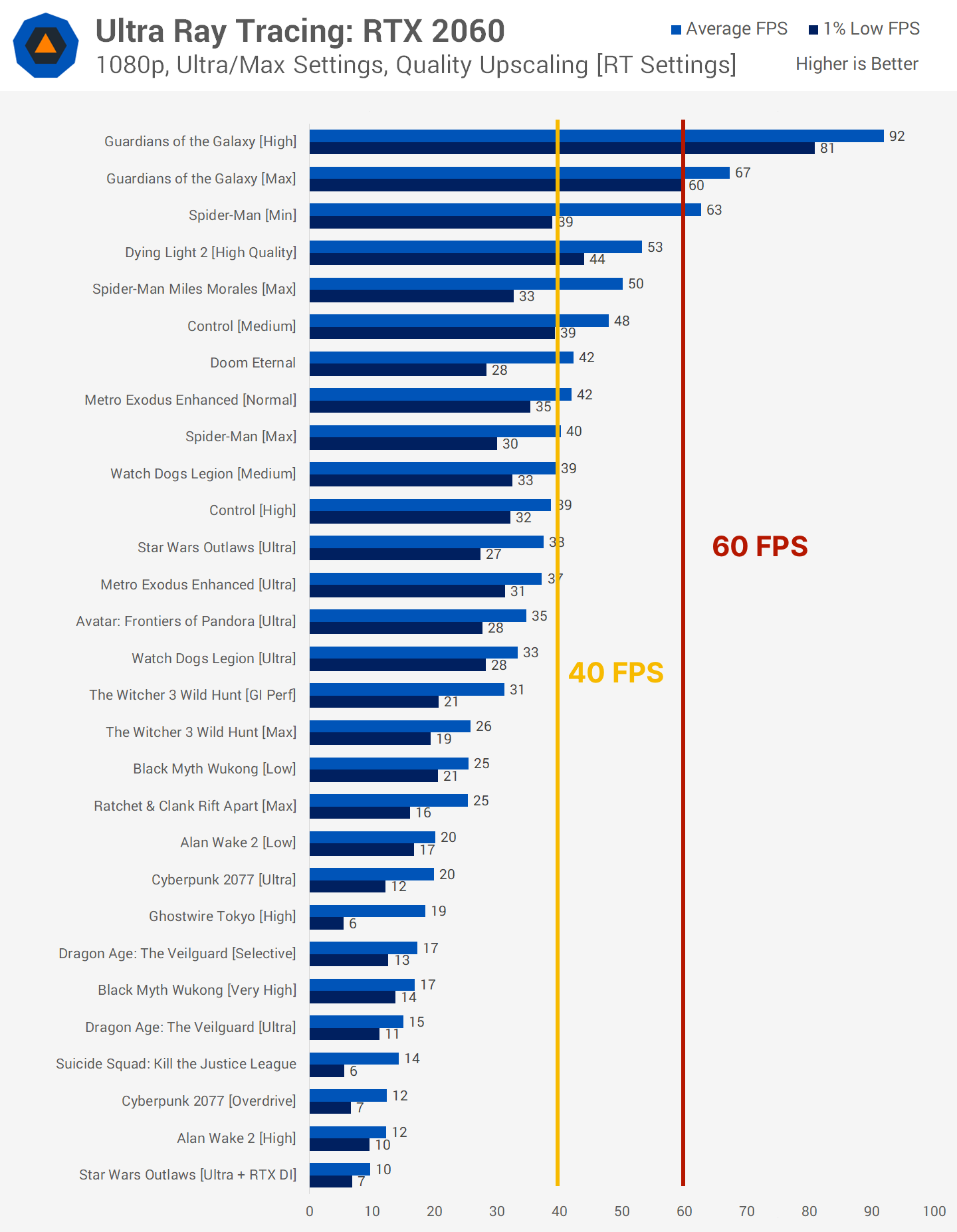
Across the 29 game configurations where ray tracing provides a noticeable visual improvement, or where ray tracing is always enabled, only three of them could run at 60 FPS on average. And this is at 1080p, not 1440p, the resolution the RTX 2060 was initially designed for.
We’d say that 60 FPS offers a reasonable experience in most of these titles, but if we lower the definition of “playable” to 40 FPS, we still end up with just nine configurations delivering a playable experience.
In 13 configurations, the average frame rate was below 30 FPS, and in 18 configurations, the 1% low dropped below 30 FPS. This is a poor result for a GPU marketed as ray tracing-capable.
Part of this, of course, is due to the fact that the RTX 2060 is now effectively an entry-level GPU in terms of overall performance. Among the 16 games tested without ray tracing enabled, half couldn’t hit 60 FPS using maximum or ultra rasterized settings. Given that ray tracing typically causes a 30 – 40% performance drop, the RTX 2060 was always going to struggle. Still, in just three titles, the 2060 failed to deliver a minimum playable 40 FPS average.
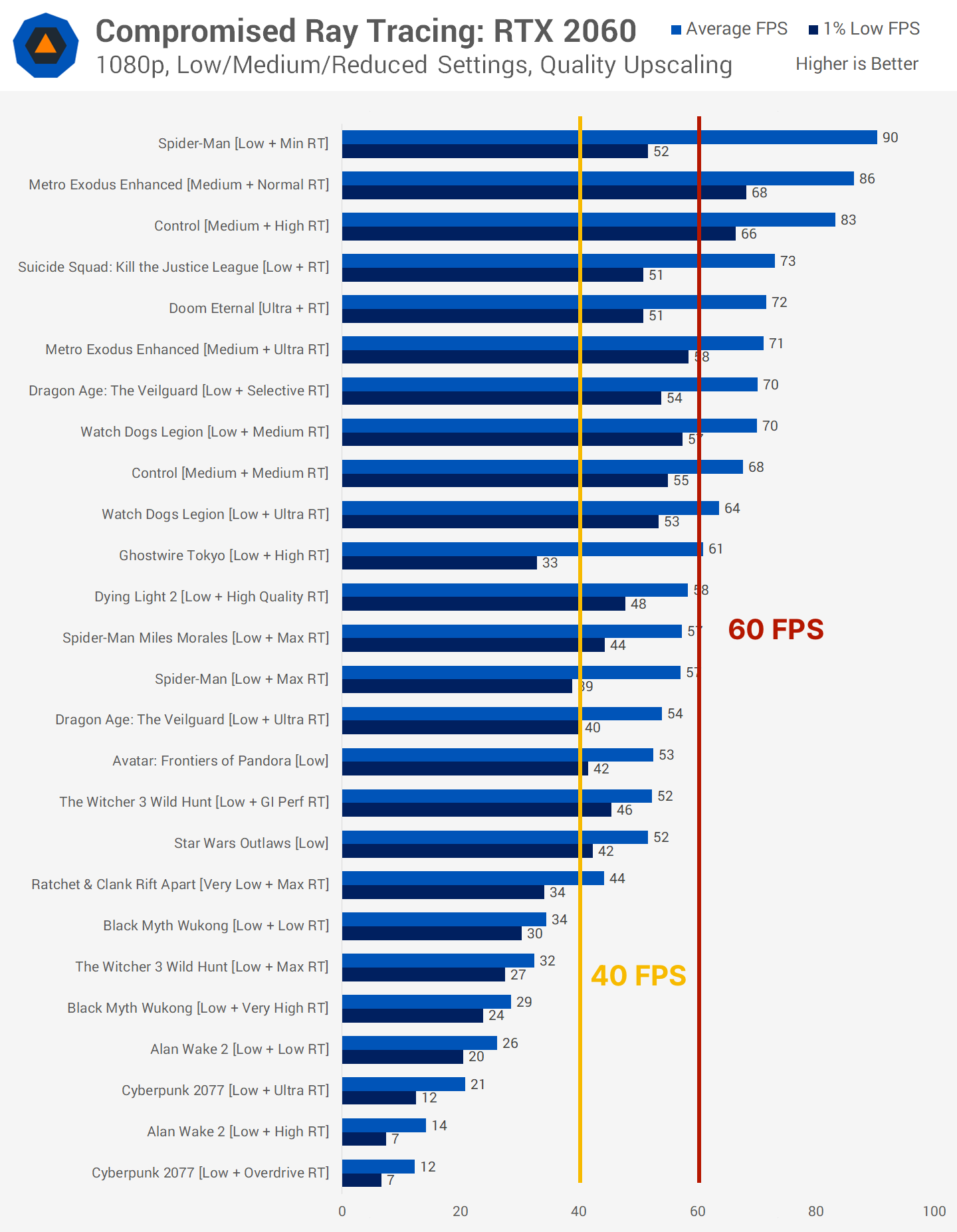
What’s more disappointing is that, across 26 ray tracing configurations, 15 of them couldn’t deliver 60 FPS on average, even using the lowest presets available in the game, at 1080p with DLSS Quality enabled. In several titles, no matter how much you compromise visual quality elsewhere, ray tracing just isn’t feasible.
However, in 19 configurations, at least 40 FPS was achievable on average, so if you’re willing to run other settings on Low, the RTX 2060 is technically capable of ray tracing in some games.
There were only a handful of titles where ray tracing felt truly viable on the RTX 2060 at 1080p in a way we’d actually consider playing.
There were only a handful of titles where ray tracing felt truly viable on the RTX 2060 at 1080p in a way we’d actually consider playing. Guardians of the Galaxy was decent, the Spider-Man games were okay, Metro Exodus Enhanced Edition was playable, and there were a couple of borderline configurations.
But we’re not going to try and justify running games at 40 FPS with compromised quality settings to claim the RTX 2060 is truly ray tracing-capable, because most gamers wouldn’t choose to play that way. Let’s be honest: if the frame rate drops to 40 FPS with ray tracing on, most would disable it.
Wrap Up: Never Fast Enough
It’s clear that Nvidia heavily exaggerated the ray tracing capabilities of the RTX 2060 at launch. Now that we have genuinely great examples of ray tracing, including impressive path-traced modes in titles like Alan Wake 2, it’s evident the RTX 2060 was never powerful enough to handle ray tracing properly.
Ray tracing should never have been a reason to buy this GPU, and it shouldn’t have been marketed on the promise of a “ray tracing future.” This was made worse by equipping this card with just 6GB of VRAM in the standard configuration – a limitation that’s already crippling in some modern titles, even without factoring in ray tracing’s added VRAM requirements.
Also see: How Much VRAM is Enough for PC Gaming?

The reality is that as mid-range GPUs age, they quickly become entry-level in the modern gaming landscape and struggle to run games at decent resolutions and quality settings. The RTX 2060 was originally designed as a 1440p 60 FPS GPU, which made sense at $350 in 2019.
In today’s titles, you’d be lucky to hit 60 FPS at ultra settings even at 1080p with upscaling enabled. Games grow more demanding over time, not less, so adding ray tracing to a card that was never fast for normal rasterization was never going to end well.
If we consider the RTX 2060 as a baseline and remember it’s nearly six years old, we should be demanding significant advancements in ray tracing performance with the next GPU generation. Six years should be enough time to make ray tracing viable for entry-level GPUs in 1080p gaming.


Three GPU generations later, with plenty of ray tracing marketing and countless promises about the future of hardware-accelerated ray tracing, it’s fair to expect cards across the entire product stack to handle ray tracing properly. There are now a decent number of ray tracing-supported games, and it’s time for GPUs that can enable ray tracing without compromise, even at the mid-range level. We feel that’s an acceptable minimum standard to ask for, because how long are we going to just put up with ray tracing being a feature for high-end buyers only?
For mid-range GPUs in the $350 – 450 range, there should be no excuses or compromises – they absolutely should be capable of ray tracing. Gamers buy GPUs in that price range for 1440p gaming with ultra settings at 60 FPS, at minimum. Next-gen GPUs should deliver that level of performance with ray tracing on, we think that’s a fair expectation more than six years into the “ray tracing era”.

The problem with meeting these expectations is that the baseline needs to rise substantially. Entry-level GPUs need to be at least double the ray tracing performance of the RTX 2060 to make high quality 1080p gaming with ray tracing a reality, probably triple the performance or more if we want to factor in path tracing or the most taxing examples. Yet today, the cheapest RTX GPU you can get – the GeForce RTX 3050 – is actually quite a bit slower than the RTX 2060.
A much higher performance baseline means game developers can use more advanced and visually stunning ray tracing effects into games, knowing that PC gamers have the hardware to support those settings. The effort won’t be wasted, more gamers might want to enable ray tracing, and the visual quality of games can move forward at a faster pace. But that only happens if entry-level and mid-range GPUs improve dramatically.
Shopping Shortcuts:
- Nvidia GeForce RTX 4070 on Amazon
- Nvidia GeForce RTX 4070 Super on Amazon
- AMD Radeon RX 7800 XT on Amazon
- Nvidia GeForce RTX 4070 Ti Super on Amazon
- AMD Radeon RX 7900 XT on Amazon
- Nvidia GeForce RTX 4080 Super on Amazon
- AMD Radeon RX 7900 XTX on Amazon










